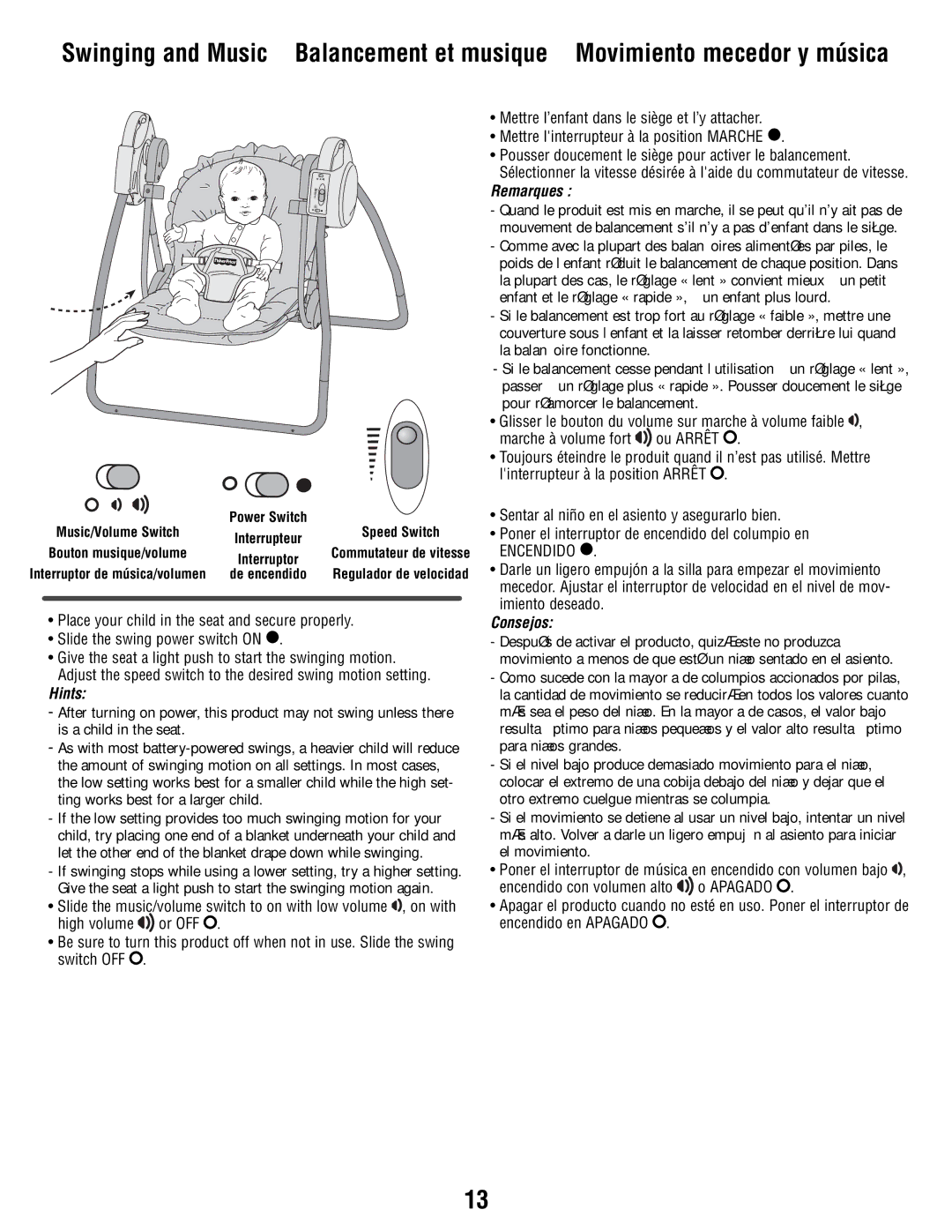N9327 specifications
The Fisher-Price N9327 is a popular addition to the world of children's toys, celebrated for its engaging design and a plethora of developmental benefits. Aimed primarily at toddlers and preschoolers, this toy captures the attention of young minds while providing an array of functionalities that cater to different stages of childhood.One of the standout features of the Fisher-Price N9327 is its colorful and vibrant design. Utilizing bright primary colors not only makes the toy visually appealing but also stimulates the child's interest. The design incorporates various textures and patterns, encouraging tactile exploration which is essential for sensory development in young children.
This toy is equipped with interactive elements that invite children to play and learn simultaneously. It often includes buttons, levers, and switches that promote fine motor skills as toddlers learn to manipulate different parts of the toy. The sounds and lights that accompany these actions captivate attention while reinforcing cause-and-effect learning—an essential cognitive skill.
The Fisher-Price N9327 also integrates educational content, often featuring songs, phrases, and numbers that introduce basic concepts such as counting and the alphabet. This blend of play and education helps lay a foundation for early learning, making it an excellent resource for parents who want to encourage developmental growth in a fun way.
Safety is always a primary concern when it comes to children's toys, and the Fisher-Price N9327 is crafted from non-toxic materials and is designed to withstand the rigors of active play. The toy is well-constructed, featuring rounded edges and smooth surfaces, ensuring safe play for children as young as 12 months.
Moreover, the Fisher-Price N9327 is often praised for its durability. Designed with active toddlers in mind, it can endure falls and rough handling, making it a practical choice for busy parents. Its lightweight structure ensures that children can easily carry their toy around, promoting independence and imaginative play.
In summary, the Fisher-Price N9327 epitomizes the perfect blend of fun and education. Its vibrant design, interactive features, and focus on safety make it an ideal toy for developing fine motor skills, cognitive abilities, and sensory exploration. With its durable construction, it stands as a reliable companion for children as they embark on their early developmental journey.

